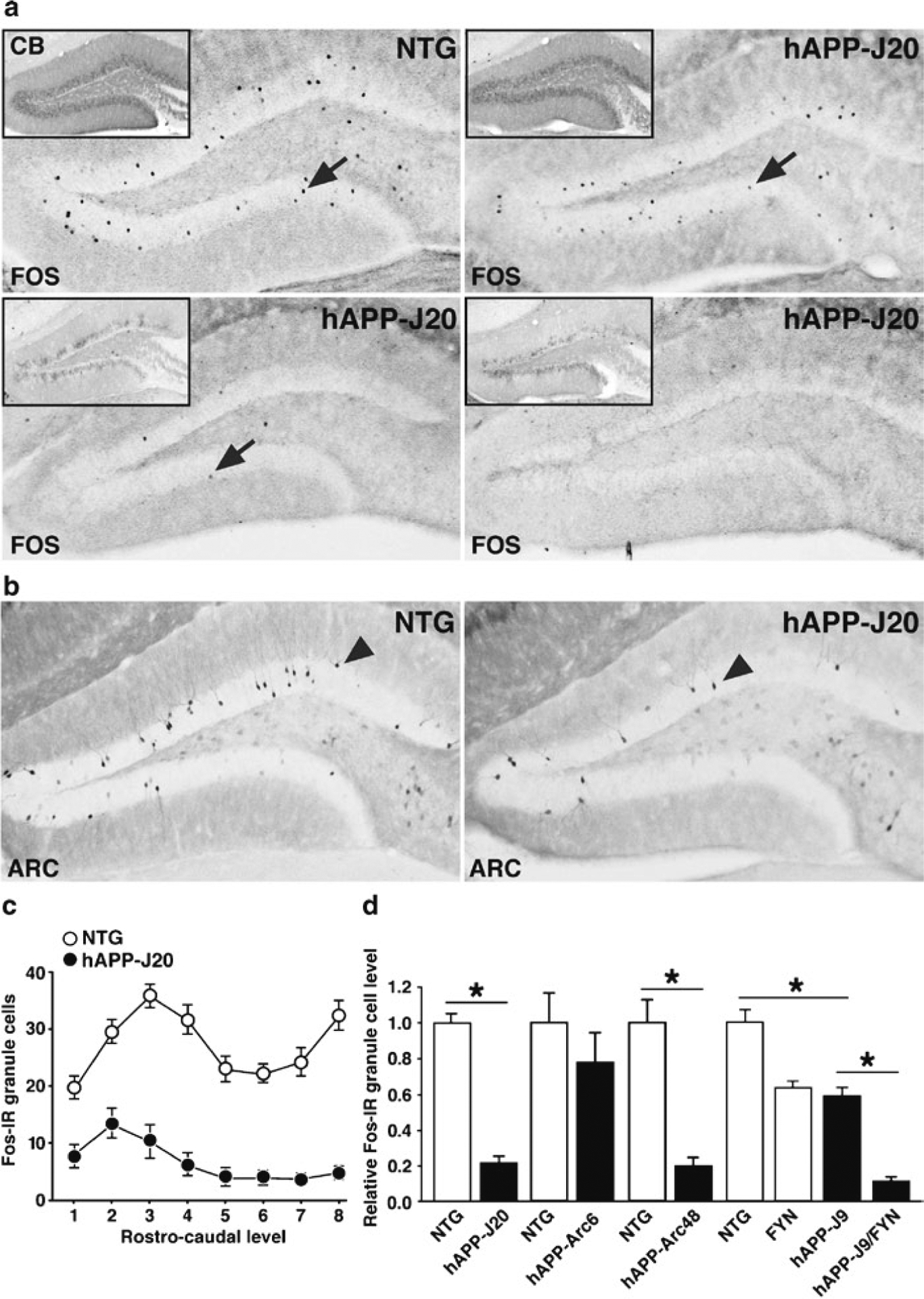Fig. 3.

Reduced number of Fos- and Arc-positive dentate granule cells in hAPP mice. (a) Sections through the hippocampus of NTG or three different hAPP-J20 transgenic mice were immunostained for Fos. Inset shows calbindin immunoreactivity from the same animals. Some hAPP mice show normal levels of Fos and calbindin immunoreactivity (upper right), whereas most show varying degrees of reductions in both Fos and calbindin. (b) Arc-positive granule cells are also reduced in hAPP-J20 mice (originally demonstrated in ref. 11). (c) Plot of Fos-positive granule cells along the rostro–caudal axis of the dentate gyrus (1 = most rostral/dorsal; 8 = most caudal/ventral). The number of Fos-positive cells was reduced in hAPP-J20 mice along the entire axis. N =12–18 mice per genotype. (d) Quantification revealed reduced numbers of total Fos-positive granule cells in hAPP-J20 mice (originally demonstrated in ref. 7), hAPP-J9/FYN mice (originally demonstrated in ref. 12), and hAPP-Arc48 mice (originally demonstrated in ref. 14). *P < 0.05 by Student’s t-test or Tukey–Kramer test.
